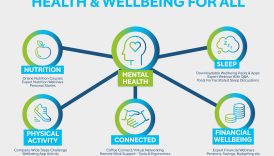Healthy Eating Made Easy: Tips for a Nutrient-Rich Diet

Introduction to Healthy Eating
Importance of a Nutrient-Rich Diet
Healthy eating is not merely about weight management; it’s fundamentally about nourishing the body and mind. A nutrient-rich diet is crucial for several reasons:
- Healthy Eating Made Easy: Tips for a Nutrient-Rich Diet
- Introduction to Healthy Eating
- Importance of a Nutrient-Rich Diet
- Common Barriers to Healthy Eating
- Planning Your Meals
- Setting Realistic Goals
- Building a Balanced Plate
- Choosing Nutrient-Rich Foods
- Incorporating Whole Grains
- Selecting Lean Protein Sources
- Smart Grocery Shopping
- Reading Food Labels
- Avoiding Processed Foods
- Meal Prep and Cooking Tips
- Batch Cooking for Convenience
- Healthy Substitutions in Recipes
- Eating Out Healthily
- Making Smart Menu Choices
- Portion Control Strategies
- Staying Hydrated and Mindful Eating
- Importance of Drinking Water
- Practicing Mindful Eating Techniques
- Physical Health: Nutrient-dense foods provide essential vitamins and minerals that help prevent chronic diseases such as diabetes and heart disease.
- Mental Well-being: A balanced diet can positively impact mood and cognitive function, leading to improved mental health.
- Energy Levels: Foods rich in nutrients offer sustained energy, making it easier to tackle daily activities.
Consider someone who incorporates leafy greens, whole grains, and lean proteins into their meals. They often report having more energy and feeling more productive throughout the day.
Common Barriers to Healthy Eating
Despite the known benefits, many face challenges in adopting a healthy eating pattern. Some common barriers include:
- Time Constraints: Busy lifestyles can make it difficult to prioritize meal preparation.
- Cost: The misconception that healthy foods are more expensive can deter people.
- Lack of Knowledge: Not understanding what constitutes a healthy diet can lead to poor choices.
To overcome these barriers, it’s essential to find strategies that work individually, such as setting aside one day a week for meal prep to create a routine that incorporates healthier options into busy schedules. Recognizing these challenges is the first step towards adopting a nutrient-rich diet.
Planning Your Meals
Setting Realistic Goals
Once the decision to embark on a healthy eating journey is made, the next step is meal planning, which begins with setting realistic goals. Many jump in with lofty expectations—perhaps wanting to completely overhaul their diet overnight—which can lead to frustration and burnout. Instead, it’s more effective to start small.
- Begin with One Meal: Choose one meal a day to focus on, gradually building from there. For example, start by having a nutritious breakfast each day.
- Set Time Limits: Allocate specific days and times for meal prep, making it part of your weekly routine.
Consider a personal story where one individual aimed to incorporate more vegetables into their diet. They set a goal of adding just one serving of a vegetable to each meal per week—transforming habits over time without feeling overwhelmed.
Building a Balanced Plate
The next key aspect of meal planning is constructing a balanced plate. A well-rounded plate should include:
- Fruits and Vegetables: Aim for half your plate to be filled with colorful, seasonal produce.
- Whole Grains: Incorporate options like quinoa, brown rice, or whole wheat pasta for healthy carbohydrates.
- Lean Proteins: Include sources like chicken, turkey, fish, or plant-based proteins like beans and lentils.
By seeing your meals as a balance rather than a constraint, you’ll foster a sustainable eating pattern that keeps you satisfied and healthy. Taking these steps makes healthy eating not just a goal, but a lifestyle.
Choosing Nutrient-Rich Foods
Incorporating Whole Grains
After setting your meal goals and understanding how to build a balanced plate, the next step is selecting the right ingredients. A great starting point is incorporating whole grains into your diet. Whole grains are packed with fiber, vitamins, and minerals that are crucial for optimal health.
- Opt for Brown Rice: Swap out white rice for brown rice or quinoa to boost fiber intake.
- Try Oats: A hearty bowl of oatmeal in the morning can keep you full longer and provide sustained energy.
- Choose Whole Wheat: When buying bread or pasta, look for “100% whole wheat” on the label.
For instance, someone who began using whole grain products noticed they had more energy throughout the day and could avoid that mid-afternoon slump.
Selecting Lean Protein Sources
Another vital component of a nutrient-rich diet is choosing lean protein sources. Protein is essential for muscle repair and overall body function. Focus on incorporating:
- Chicken or Turkey: Skinless poultry is a great low-fat option.
- Fish: Fatty fish like salmon provide omega-3 fatty acids, great for heart health.
- Plant-Based Proteins: Beans, lentils, and tofu are excellent sources for vegetarians and vegans.
By making these choices, individuals can create delicious meals that are nutritionally balanced. Emphasizing whole grains and lean proteins not only enhances health but also adds variety and flavors to daily meals, making the journey towards healthier eating enjoyable.
Smart Grocery Shopping
Reading Food Labels
Having made thoughtful choices about nutrient-rich foods, the next important step in your healthy eating journey is smart grocery shopping. A critical skill in this process is reading food labels effectively. Food labels are treasure troves of information, helping you make informed decisions.
- Check Serving Size: Always start by looking at the serving size, as it helps you understand how much you’re really consuming.
- Look for Key Nutrients: Pay attention to fiber, added sugars, and saturated fats. Aim for high fiber (3g or more) and low added sugars.
- Ingredients List: The shorter the list, the better. Whole foods typically have fewer ingredients.
For example, a friend of mine discovered that a favorite cereal was loaded with sugar, prompting them to switch to one with whole grains and less sugar, which greatly improved their breakfast experience.
Avoiding Processed Foods
Aside from reading labels, it’s essential to steer clear of processed foods. These often contain artificial ingredients, preservatives, and unhealthy fats. Here are a few tips on how to avoid them:
- Shop the Perimeter: Stick to the outer aisles of the grocery store where fresh produce, meats, and dairy are usually located.
- Choose Whole Ingredients: Look for foods that are minimally processed, such as whole fruits rather than fruit cups that may contain extra sugars.
By cultivating the habit of smart grocery shopping—paying attention to labels and minimizing processed foods—individuals lay a strong foundation for maintaining a healthy diet. Making these small adjustments leads to significant improvements in overall wellness.
Meal Prep and Cooking Tips
Batch Cooking for Convenience
Now that the grocery shopping is done, it’s time to dive into meal prep and cooking, two key components that will help maintain your healthy eating habits. One effective strategy is batch cooking. This method not only saves time but also ensures that healthy meals are readily available throughout the week.
- Choose a Cooking Day: Designate a specific day, like Sunday, for your meal prep.
- Prepare Large Portions: Cook large batches of grains, proteins, and vegetables. For instance, roasting a tray of sweet potatoes and prepping a pot of quinoa creates the base for various meals.
- Store Properly: Invest in good-quality containers. Portion meals into grab-and-go servings to make healthy eating hassle-free during the week.
A friend shared how batch cooking simplified their weeknight dinners; they could easily mix and match prepped ingredients for quick, nutritious meals without the stress of starting from scratch each time.
Healthy Substitutions in Recipes
Alongside batch cooking, making healthy substitutions in your favorite recipes can greatly enhance nutritional value. Here are a few swaps to consider:
- Greek Yogurt for Sour Cream: This adds creaminess while boosting protein and reducing fat.
- Zoodles for Pasta: Replace traditional pasta with spiralized zucchini for a lower-carb option.
- Cauliflower Rice Instead of White Rice: It’s a nutritious alternative that packs in the veggies.
By incorporating batch cooking and making sensible substitutions, individuals can effectively streamline their cooking process and create meals that support their health goals. This approach not only enhances convenience but also makes healthy eating enjoyable and sustainable.
Eating Out Healthily
Making Smart Menu Choices
After mastering meal prep and cooking at home, it’s time to discuss dining out—a common area where many struggle to maintain their healthy eating habits. The key to enjoying meals away from home is making smart menu choices. Here’s how to navigate restaurant menus effectively:
- Start with a Salad: Opt for a salad as a first course. Choose vinaigrettes on the side to control dressings’ portions.
- Lean Proteins: Look for dishes that feature grilled, baked, or steamed proteins instead of fried options.
- Substitutions: Don’t hesitate to ask for substitutions. For example, request extra vegetables in place of fries or a side of whole grains.
A friend of mine practices this strategy and often finds that simply asking for adjustments results in delicious meals that align with their health goals.
Portion Control Strategies
Another aspect of eating out healthily is mastering portion control. Restaurant portions can be surprisingly large, often leading to overeating. Here are some effective strategies:
- Share Entrees: Consider sharing a meal with a dining partner. This not only saves calories but also allows you to try more dishes.
- Box Half for Later: Immediately ask for a take-home box when your meal arrives. Portion out half to enjoy later.
- Mindful Eating: Slow down and savor every bite. This practice can help you recognize when you’re satisfied, preventing overeating.
By making smart choices and practicing portion control, dining out can be a pleasurable experience without derailing healthy eating efforts. Embracing these strategies helps individuals maintain balance in their food journey, allowing for enjoyment without guilt.
Staying Hydrated and Mindful Eating
Importance of Drinking Water
As we conclude the discussion on making healthy choices while eating out, it’s crucial to emphasize the role of hydration and mindfulness in your overall eating journey. Staying hydrated is key to maintaining physical health. Water plays several vital roles:
- Promotes Digestion: Drinking enough water helps your body break down food for better nutrient absorption.
- Regulates Appetite: Thirst can sometimes masquerade as hunger, leading to unnecessary snacking. Keeping hydrated can prevent that confusion.
- Boosts Energy: Proper hydration helps maintain energy levels, reducing feelings of fatigue.
For example, a friend of mine committed to drinking a glass of water before each meal. They noticed a significant decrease in overeating and an overall boost in energy throughout the day.
Practicing Mindful Eating Techniques
In addition to staying hydrated, practicing mindful eating can greatly enhance your relationship with food. Mindful eating helps individuals appreciate and enjoy the experience of eating more fully. Here are some techniques to try:
- Eat Without Distractions: Set aside time to focus solely on your meal, away from screens or phone calls.
- Savor Each Bite: Take the time to chew slowly and enjoy the flavors and textures, which can lead to heightened satisfaction.
- Listen to Your Body: Pay attention to hunger and fullness cues. Stop eating when you feel satisfied.
By integrating hydration and mindful eating into daily habits, individuals can foster a more balanced approach to nutrition. These practices contribute not only to healthier choices but also to a more enjoyable and conscious relationship with food, enhancing overall well-being.





